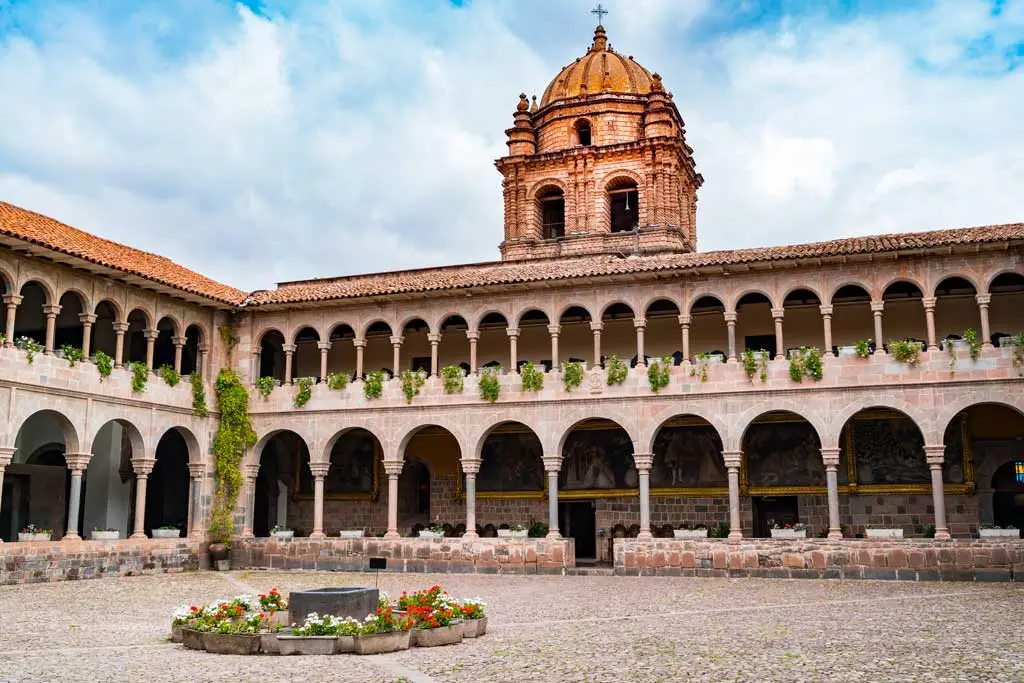The Q’orikancha, also known as the Coricancha or Temple of the Sun, is one of the most significant and awe-inspiring sites in Cusco, Peru. The name is from the Quechua words “quri,” (gold), and “kancha,” (enclosure). The site is a remarkable blend of Inca and Spanish colonial architecture, representing a fusion of two cultures and epochs.
What’s so great about Q’orikancha
It is an Architectural Marvel showcasing superior Inca stonework featuring precisely cut and fitted stones without using mortar. More fascinating is how the Spanish conquistadors built the Church of Santo Domingo on top of the original Inca structure, incorporating the Inca walls into their architecture, resulting in a unique blend of Inca and colonial styles.
The Q’orikancha carried religious significance because it was the most important temple in the Inca Empire, dedicated primarily to the sun god, Inti, and was the center of religious ceremonies. As a homage to this deity, the Q’orikancha’s walls used to be covered with around 700 sheets of solid gold, each sheet weighing about 2kg. Life-sized gold and silver corn replicas adorned the temple along with the solid-gold altars, icons of llamas and babies, as well as a replica of the sun. Sadly, the first conquistadors looted and destroyed this incredible wealth.
Ancient Inca Art and Decoration are on display. The intricate Inca stonework and remnants of the temple’s original decorations are still visible to visitors. This stonework ranks among the finest Inca architecture in Peru. Also on display are Inca artifacts and artwork reflecting the culture and beliefs of the ancient civilization.
Beautiful Gardens and Courtyards surround the Q’orikancha. These beautifully landscaped gardens and courtyards provide a tranquil space away from the hustle and bustle of Cusco’s streets. Visitors may relax, meditate, and reflect amidst the historical splendor.
How to Get to Q’orikancha
You can walk on your own down Loreto and Pampa del Castillo streets, a couple of blocks southwest of Cusco’s city center to get to Plaza Santo Domingo where the temple is located.
Almost all guided city tours have the Q’orikancha in their itineraries so you can visit as part of a group.
Fun Facts:
- On the site is a curved, precisely fitted six-meter-high wall that has withstood all violent earthquakes that demolished most of the colonial buildings in Cuzco.
- The name Q’orikancha also can be spelled as Coricancha, Curicancha, Koricancha, or Qoricancha
- At the center of the courtyard is an octagon receptacle that used to be covered with 55 kilograms of solid gold.
The Q’orikancha is located at the merging point of two rivers: one of which is the Huatanay River (now highly polluted) and the Tullumay. According to an Inca myth, it was at this cusp that Manco Cápac, the first Inca ruler, decided to build the Q’orikancha temple complex, the foundation of the Inca Empire.
The Qoricancha is a must-visit destination that will satisfy your curiosity about Inca history, architecture, and culture, offering a peek into the rich heritage of both the Inca civilization and the Spanish colonial period.



